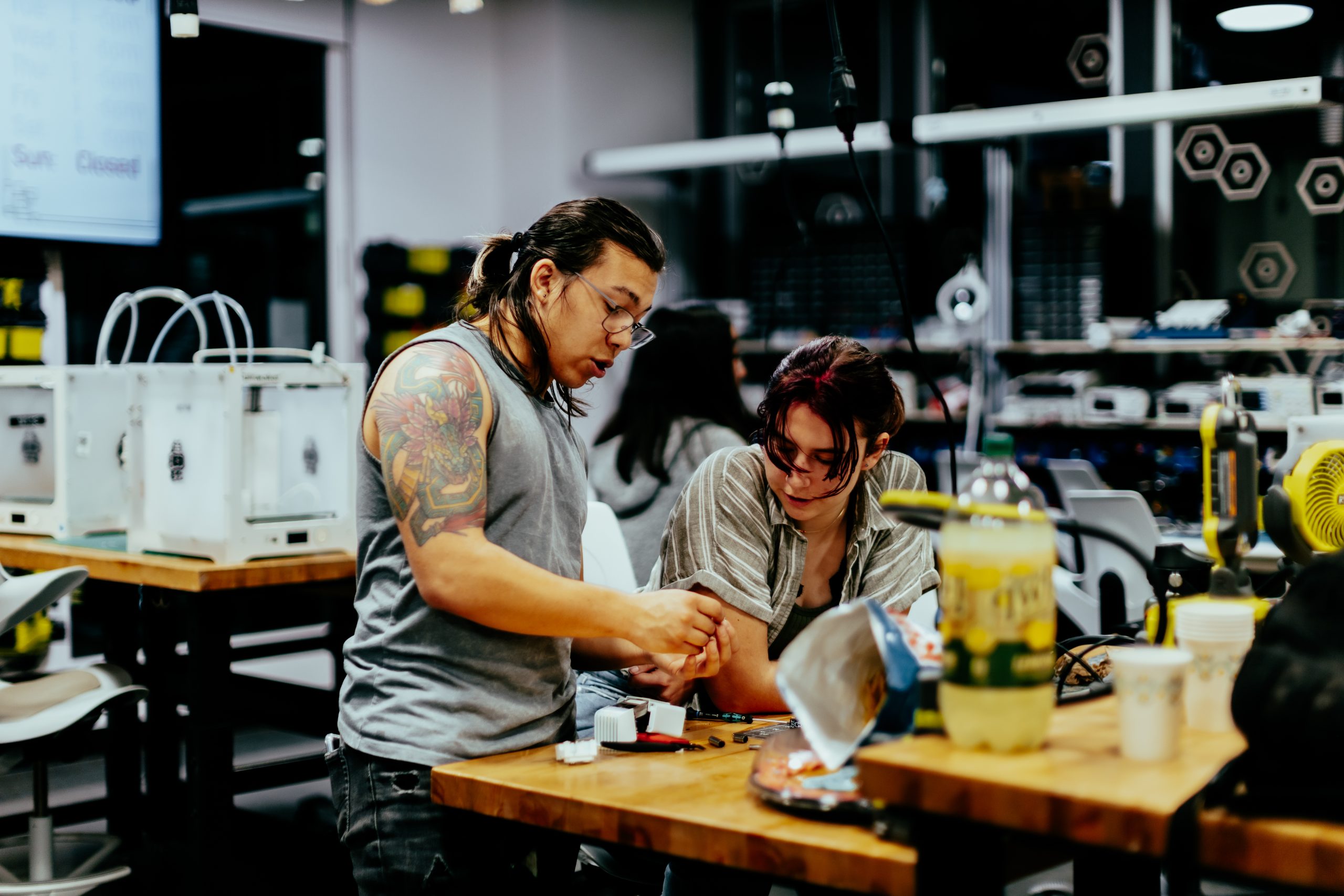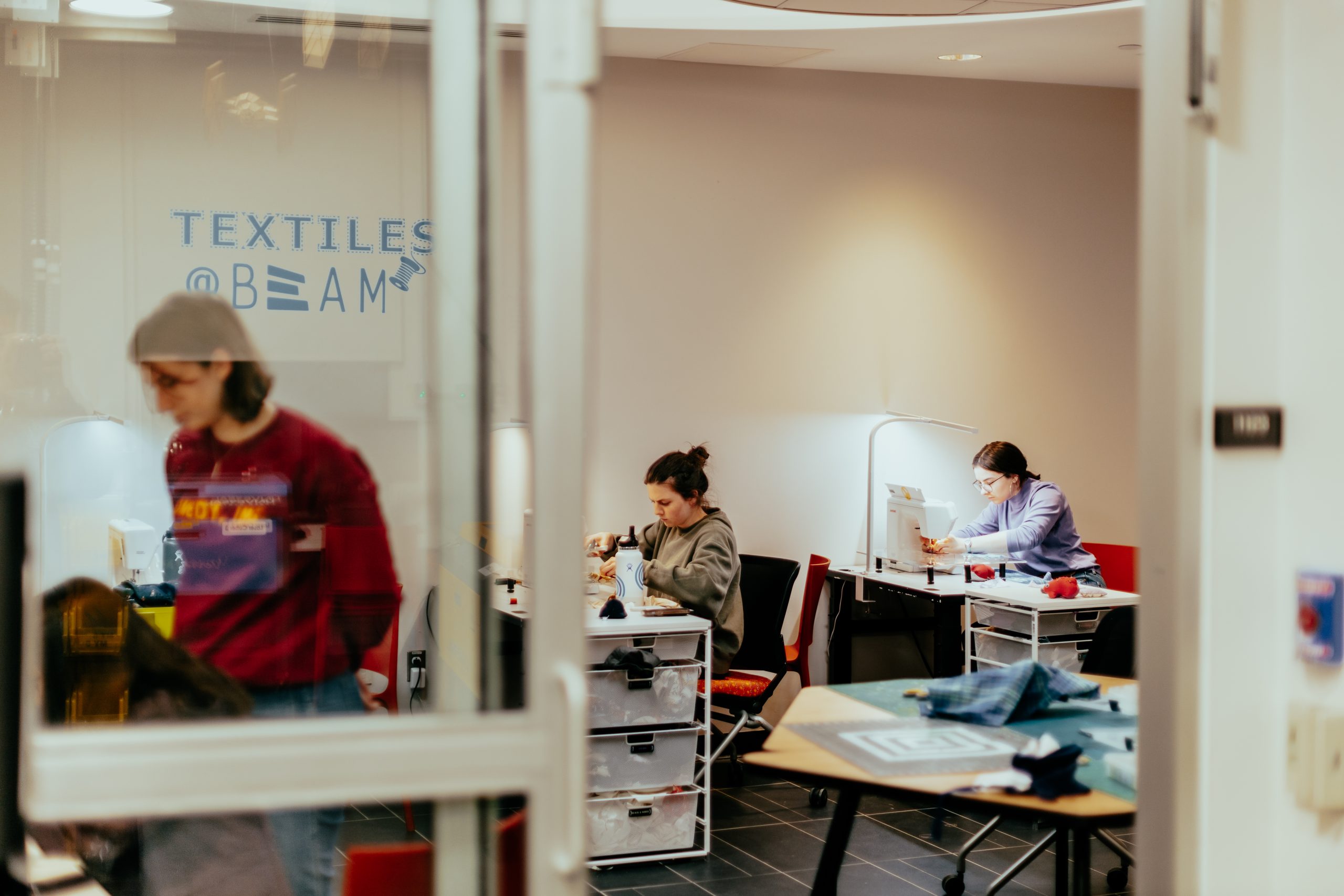Communities of practice at BeAM use peer-to-peer learning to deepen skills
Communities of practice at BeAM use peer-to-peer learning to deepen skills

Lindsey Pegram (‘23) has been a CoP facilitator in the woodshop and textile tool areas for two semesters. As Pegram guides members of each learning group, or cohort, through experiential learning activities, she now understands that being a leader is about much more than simply teaching others.
“It’s really about collaborating with and learning from others, while having the humility to express when you do not feel confident about something and allowing others to help you,” she shares.
For Pegram, who is currently pursuing her bachelor’s degree in public health (BSPH) in Environmental Health Sciences at UNC’s Department of Environmental Sciences and Engineering, peer-to-peer learning is important because it highlights that facilitators are learning alongside cohorts. “The specialist staff that lead CoPs are not teachers or experts. Instead, they are facilitating a collaborative and supportive environment in which they are learning alongside other members of the CoP,” she says. “Each student shares the responsibility of learning and teaching in order to improve the collective knowledge of the group .”

While she notes such an exercise could be intimidating, Pegram embraced the challenge. “Opportunities like this help learners not only become better acquainted with how the machines work, but also how to use them to complete projects. Plus, seeing my fellow peers instruct each other was an awesome way to see how these types of workshops inspire collaboration.”

To evaluate the program’s success, surveys are given to CoP facilitators before and after rotations through tool areas to self-assess their confidence in these skills. “By the end of the fall 2022 semester, new student staff were on average 82% more confident with teaching others about MakerSpace tools. Students are getting better opportunities to communicate with and rely on each other, pull on resource networks, and practice professional skills,” Engelke says.
“CoP is a great way to strengthen the BeAM community through supportive peer-to-peer engagement in an ongoing, sustainable way,” Engelke concludes. “Students and staff can work on their own professional development while strengthening connections to the MakerSpace and each other.”
Communities of Practice at BeAM are made possible with funding from the Kern Family Foundation
Photos were taken by student photographer and BeAM staff member Orlando Hernandez.

